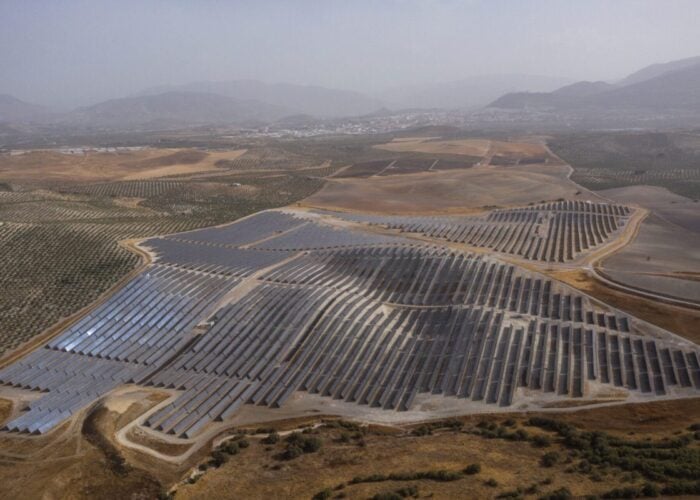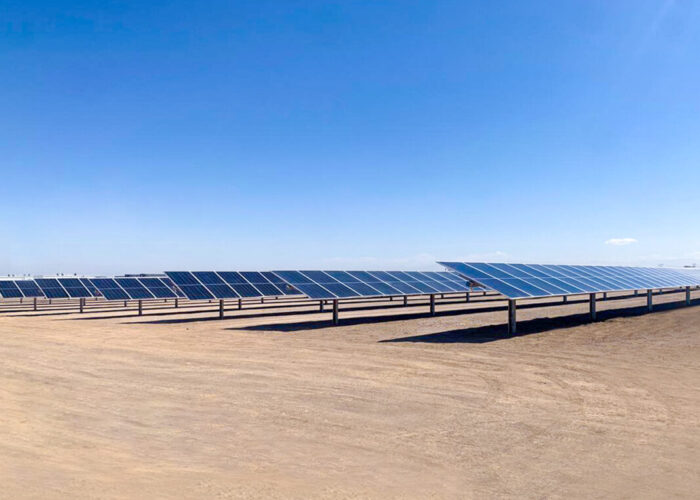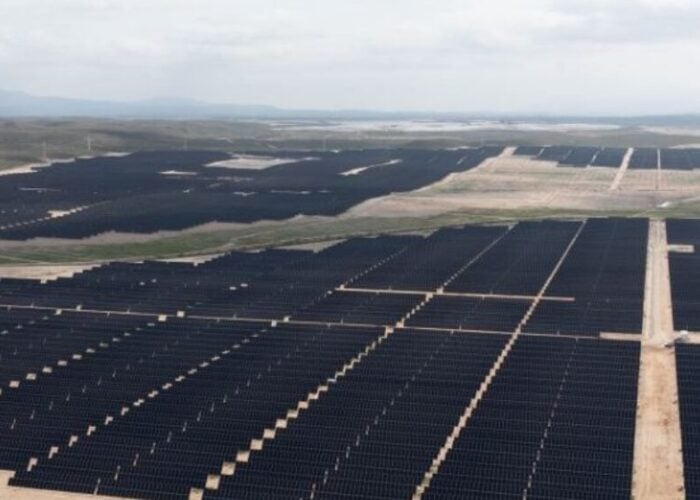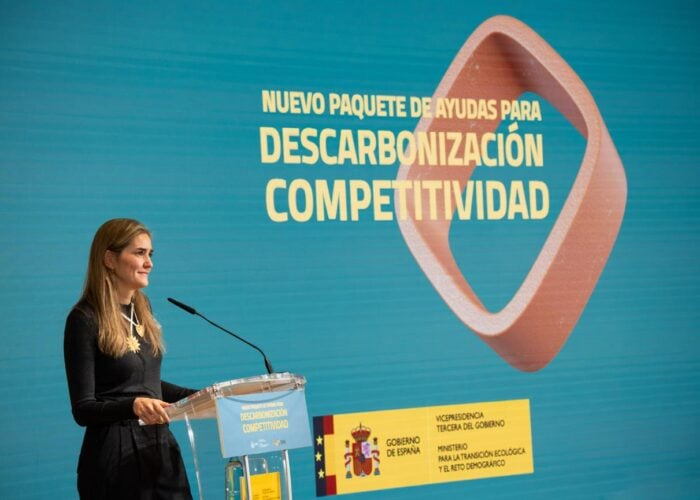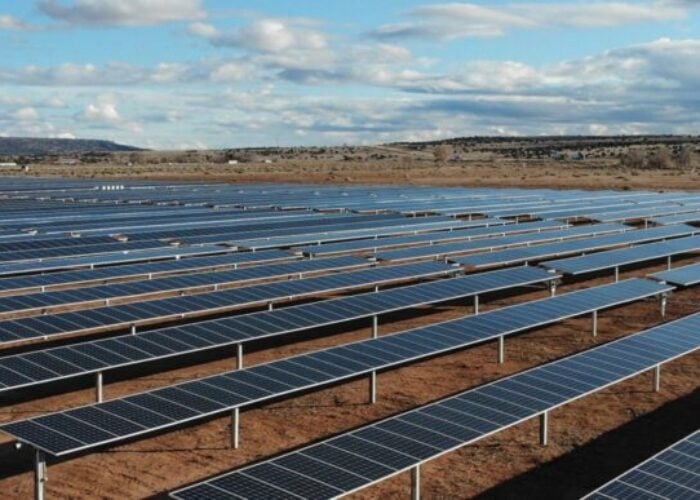
49 days after Spain’s blackout, the government has released the results of its investigation into the incident, and has ruled out renewables as the cause of the disruption.
The Ministry for the Ecological Transition and the Demographic Challenge (MITECO) released the report on the causes of the Iberian Blackout on 28 April 2025 at 12:33, which puts the blame on Red Eléctrica, the country’s transmission system operator (TSO), and conventional power plants.
Try Premium for just $1
- Full premium access for the first month at only $1
- Converts to an annual rate after 30 days unless cancelled
- Cancel anytime during the trial period
Premium Benefits
- Expert industry analysis and interviews
- Digital access to PV Tech Power journal
- Exclusive event discounts
Or get the full Premium subscription right away
Or continue reading this article for free
The conclusions from the report highlight a three-pronged issue that ultimately caused the Iberian blackout: the grid possessed insufficient control capacity, unusual oscillations in voltage and frequency and the improper disconnection of some power plants.
The report also noted that some of the improperly disconnected plants were removed from the grid before they had exceeded the voltage thresholds established by the regulations for this purpose: between 380kV and 435kV in the transmission network.
“The blackout in Iberia was a rare event with multiple, complex factors,” said Sarah Brown, Europe programme director at think tank Ember. “However, the Spanish government has stated that conventional power plants were a key contributor to the incident due to failure to provide voltage control services, along with possible grid management issues.
“This appears to contradict weeks of unhelpful and inaccurate speculation that wind and solar were entirely to blame. In fact, renewables played a crucial role in restoring system stability and getting the power back on so quickly. This event reinforces what we already knew. As power systems evolve, enhanced grid optimisation and flexibility are essential for resilience.”
During a Congress of Deputies session last month, MITECO’s minister, Sara Aagesen Muñoz, had already ruled out a cyberattack as the possible cause of the blackout, an assessment which the report agreed with
However, yesterday, during a press conference outlining the investigation’s report, Aagesen Muñoz said: “What I can say and highlight today is that vulnerabilities, shortcomings, or poor configurations of security measures have been identified that could expose networks or systems to potential future risks.”
Multiple errors
The report from the investigation – which can be accessed here (in Spanish) – also gave context for the event and what happened both on 28 April 2025 and in days before the blackout.
This was separated into five different phases, from phase 0, called “Voltage instability days and weeks prior” to phase 4, dubbed “Supply replacement”. The other phases include the moments prior to the event that same day, with the system oscillations occurring minutes before the generation losses due to overvoltage, which led to the total collapse of the grid.
Regarding the first cause, on the day before the blackout, Red Eléctrica had requested that ten thermal power plants, spread across the country, be on standby on 28 April for the sole purpose of dynamic tension control. However, one of the plants informed the TSO it was not going to be operational that day, which did not end up being replaced.
As covered previously on PV Tech, on the day of the blackout, the grid suffered oscillations half an hour before the loss of power that generated the blackout in the Iberian Peninsula.
“The oscillations are natural, known and relatively frequent on the system. The oscillations at 12:03 weren’t one of these. It wasn’t an oscillation known, nor typical in the system,” explained Aagesen Muñoz. She added that the atypical oscillation had a 0.6 Hz frequency higher than the frequent ones, explaining that even though it had been detected across the border, in France, it was a local occurrence.
This oscillation has been associated with a specific power plant, not disclosed by the minister. Addressing that issue ended up causing an increase in the grid’s voltage.
In response, Spain reduced its electricity export to France, which ended impacting the grid’s voltage too, explained Aagesen Muñoz. All the measures that were applied that day between the first oscillation and 12:33 were “effective,” although with a negative effect on the system’s voltage.
The TSO had requested a plant to connect to the grid in the south of Spain, in order to help stabilise the grid. However, this would have required the plant to be ready nearly two hours before it would become operational, which was too late to help avoid the blackout.
On top of that, the conventional power plants requested to be on standby the day prior, were not providing voltage control services.
“Once the chain reaction began, the usual protections of the electrical system were unable to stop or contain this process. Some of these protections, such as load shedding, may have even contributed to the surge phenomenon by further discharging the lines, contributing to the rise in voltages, because they acted to compensate for the drop in generation rather than to manage the voltage,” said MITECO.
Industry calls to improve grid resilience
Juliet Phillips, energy campaigner at Beyond Fossil Fuels, said: “This report concludes that the blackout was caused by the failure of nine conventional power plants to do their job. This flies in the face of the commentary being pushed by the fossil fuel lobby, who have sought to pin the blame on renewables for causing the blackout.
“We urge Spain’s government and Red Eléctrica to work together to build the clean and flexible power system needed to ensure long-term energy security and bring down power bills.”
A statement from five national and international solar PV and renewables industry associations – UNEF (the Spanish Solar PV Association), APREN (the Portuguese Association Of Renewable Energy), SolarPower Europe, the Global Solar Council and the Global Renewables Alliance – called for an accelerated investment in grid resilience.
“Let us be clear: solar PV was not the cause of the blackout. The investigation confirms that managing an electricity system is a complex and multi-faceted undertaking and is of great societal importance,” wrote the associations.
“Going forward, the Iberian blackout must be a moment of learning. Solar PV already has the capacity to control voltage, but regulations did not allow it to do so.
“This is a call for accelerated investment in grid resilience and system flexibility – especially through grid-forming inverters and battery storage. These technologies are already available and are key to supporting stable voltage levels, managing variability, and delivering renewable-powered energy security.”
Spanish government to implement measures
Aagesen Muñoz added that some “relevant” measures will be approved in next week’s Council of Ministers. Among the recommendations from the investigation is for the government to prioritise increase cross-country interconnection.
This priority will be realised soon enough, as earlier this week the European Investment Bank (EIB) invested €1.6 billion (US$1.85 billion) to support the 2.2GW Bay of Biscay interconnector between Spain and France.
The project will include over 400km of connection infrastructure, including subsea cables and transformer stations in both countries. Expected to be operational by 2028, the project will increase the interconnection capacity between Spain and France from 2.8GW to 5GW. It is yet to be seen if the Spanish government’s upcoming measures will further increase the interconnections between both countries.
Another measure aims to enable solar PV to contribute towards voltage control on the grid, for which the grid already has the technical capability. Aagesen Muñoz said that she would seek to pass ‘Operating Procedure 7.4’ to allow this to happen, a decision that has been positively viewed by UNEF.
The Spanish trade body also called for the adoption of other technologies already existing, such as battery energy storage systems (BESS) and grid-forming inverters, which are pending approval of European regulations.
Despite being one of the leading European countries in installed solar PV, Spain is far behind when it comes to installed BESS. “Last year, Spain ranked 14th in Europe in terms of battery installation, with less than 250MWh of new batteries, compared to 9GW of new solar,” said a statement from the five trade associations.
“Nearly all new installations were smaller-scale batteries, not at utility level. Pre-Blackout, the Spanish market was already responding to this clear need for more battery storage and flexibility. In 2025, Spain is expected to climb to become a top-five European battery market, thanks to the utility-scale battery segment revival. Now it is for authorities to ensure that the sector is able to deliver.”

